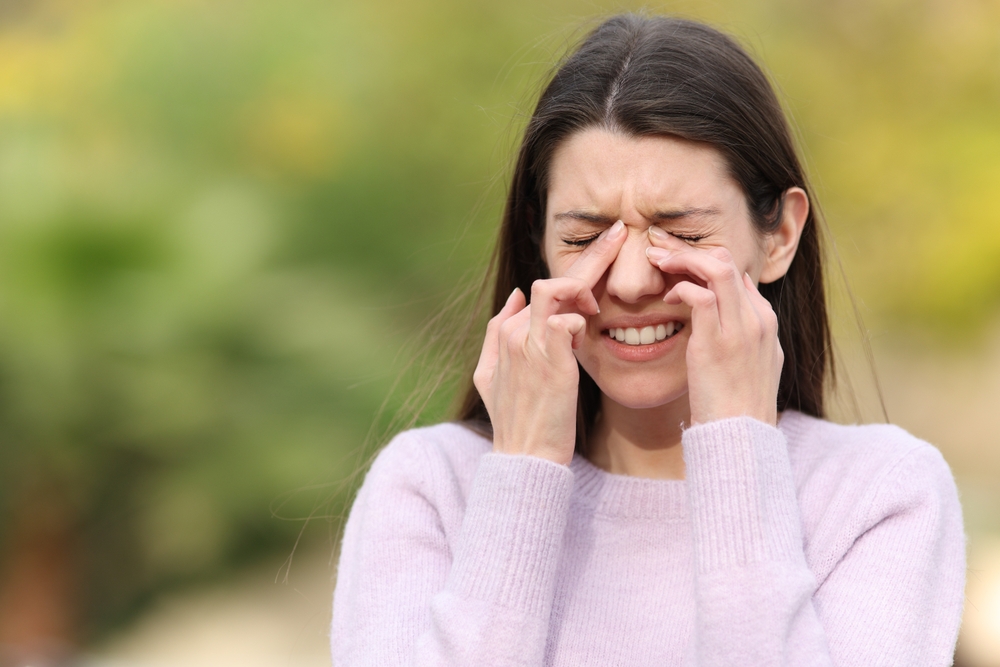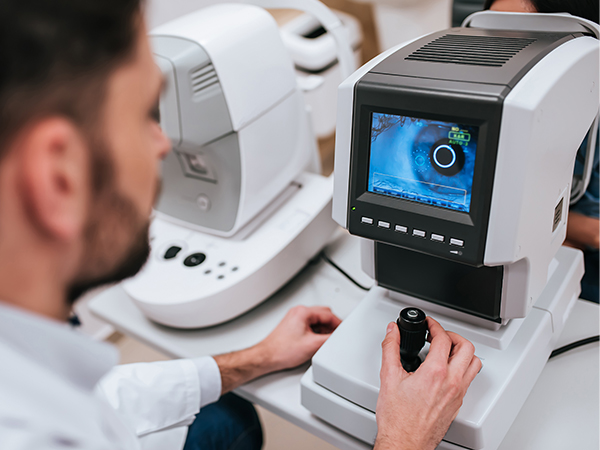
Dry eye is a common condition that affects people of all ages, often leaving the eyes feeling irritated, gritty, or watery. While underlying health conditions can contribute, many cases of dry eye are directly influenced by our everyday surroundings. Recognizing how environmental factors play a role can help you take steps to protect your eye health.
What Is Dry Eye?
Dry eye is a common condition that occurs when your eyes do not produce enough tears, or when the tears they do produce are of poor quality. Tears are essential for keeping the surface of your eyes smooth, lubricated, and healthy. Without a stable tear film, your eyes may feel dry, irritated, gritty, or watery, and you may also experience blurry vision or discomfort after activities like reading or using digital devices.
Common Environmental Triggers
Dry or Windy Weather: Low humidity, high winds, and cold air can all cause tears to evaporate more quickly, leaving your eyes without the moisture they need to stay comfortable.
Indoor Air Quality: Heating and air conditioning systems, as well as ceiling fans, can dry out the air inside your home or office. Prolonged exposure in these environments can make dry eye symptoms worse.
Digital Device Use: Extended screen time reduces how often you blink, which disrupts the natural spread of tears across the eye’s surface. Over time, this can contribute to dryness, burning, and eye fatigue.
Allergens and Irritants: Dust, smoke, and pollution not only irritate the eyes but can also affect tear film stability. Seasonal allergies may add an extra layer of discomfort for those prone to dry eye.
What You Can Do to Protect Your Eyes
Use a humidifier indoors to add moisture to the air.
Take regular breaks from screens using the 20-20-20 rule: every 20 minutes, look at something 20 feet away for at least 20 seconds.
Wear protective eyewear outdoors to shield your eyes from wind, dust, and UV rays.
Stay hydrated by drinking enough water throughout the day.
Avoid smoke and irritants whenever possible.
When to See Your Eye Doctor
While small adjustments can help ease symptoms, persistent dry eye may be a sign of an underlying condition that requires professional diagnosis and care. It’s important to schedule an appointment with your eye doctor if you continue to experience ongoing dryness, redness, or irritation even after trying home remedies.
You should also seek care if you notice blurry vision that comes and goes, sensitivity to light, or increasing discomfort when wearing contact lenses. These symptoms may indicate that your eyes need a proper diagnosis and more specialized treatment from an eye care professional.
Protect Your Eyes with Expert Dry Eye Solutions
Environmental factors can have a significant impact on your eye comfort, but with the right strategies, you can reduce dryness and protect your vision. If your symptoms persist or worsen, it’s important to seek professional evaluation to rule out other causes and explore advanced treatment options.
At Crystal Clear Eye Care, Dr. Travis Loven and our team are dedicated to providing personalized solutions for dry eye relief. Visit our office in Waco, Texas, or call (254) 399-9979 to book an appointment today.





